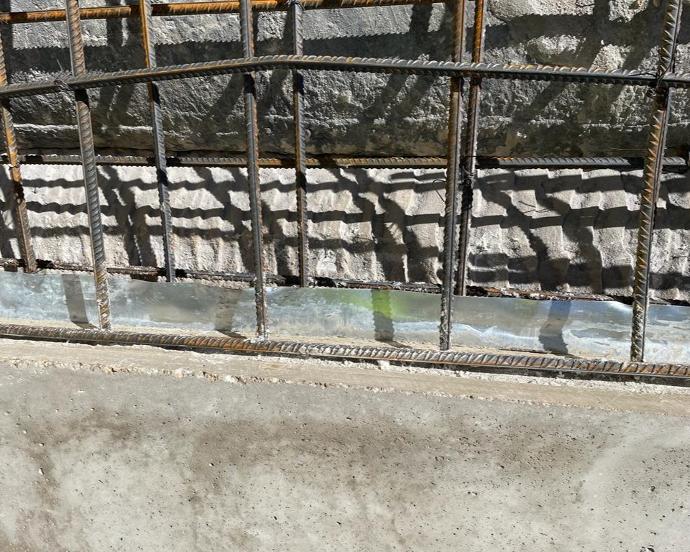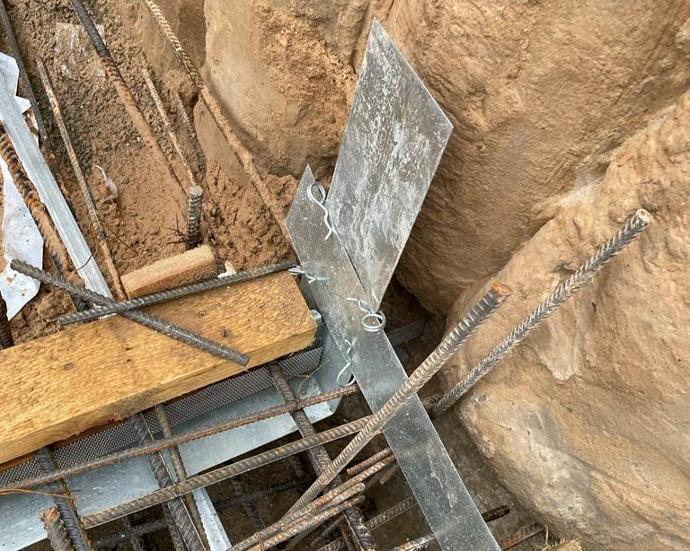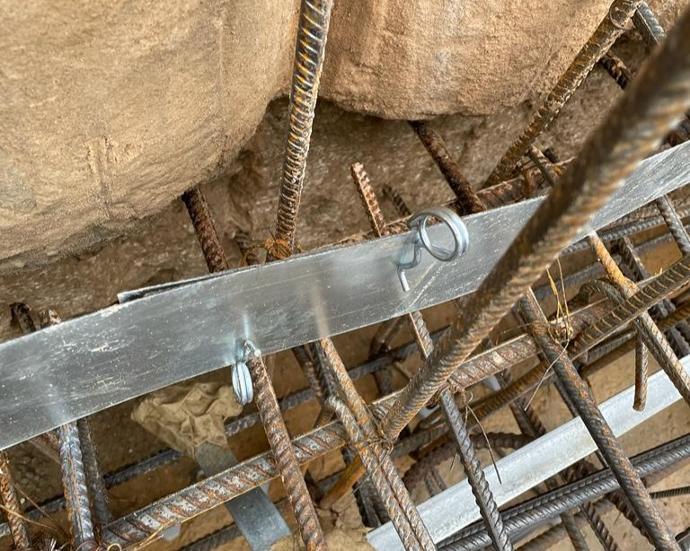As being part of the concrete structures waterproofing, it is important to seal construction joints for both white and black tank waterproofing solutions.
Today, there are mainly three ways widely used to waterproof construction joints:
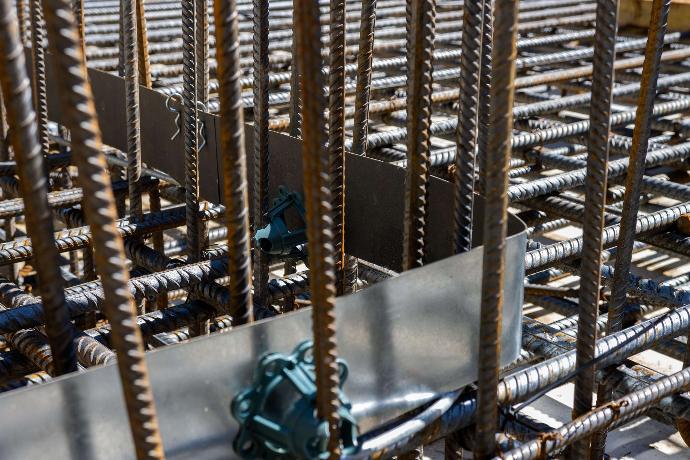
In the following, we outline the conditions and methods of their use with the purpose of waterproofing in mind. We will also add some observations regarding the various solutions we have encountered in our work over the years.
Construction joint profiles, i.e., waterstops
By its very nature, the construction joint profile is a resistor placed perpendicularly in the construction joint, through which water cannot move over at a specific pressure range (check on the product data page). To ensure better water resistance of the products, a coating is added to the profiles, which prevents water movement over the profile. WPM® profiles sold by us have added mineral coating, which becomes homogeneous with the concrete during the concrete setting. On the other hand, a homogeneous bond creates a stronger water resistance, ensuring a more watertight joint. The proven water pressure resistance of WPM profiles is 2.4 bar – see more here.
For the construction joint profiles to fulfill their purpose, the installation must be accompanied by a concrete casting that meets the official requirements. Poor concrete casting, i.e., insufficient and uneven density of concrete around the profile, creates a porous structure for the concrete, which allows penetration over the waterstop in the construction joint. That is why we have paid special attention to thorough concrete work, for which we have also prepared a separate guide, which you can see here.
Waterstops can only be used for cast-in-place concrete. Profiles can be installed in floor-wall and wall-ceiling construction joints before and during the casting, in which order does not play a significant role in the result. However, in the case of wall-to-wall and floor-to-floor construction joints, it is essential to install and fix the profiles in the correct location before casting. To simplify the design of these construction joints, we offer WPM® Stop-End profiles (hidden formwork), which simultaneously work as water resistance in the construction joint.
We want to highlight not to step on already installed and sealed waterstop during concrete work. A damaged and bent waterstop makes the product ineffective. Damaged areas must be noticed and repaired by adding either a new piece of the same product or, for example, an additional clay-based waterstop or injection hose next to the damaged waterstop.
Expanding waterstops (clay tape)
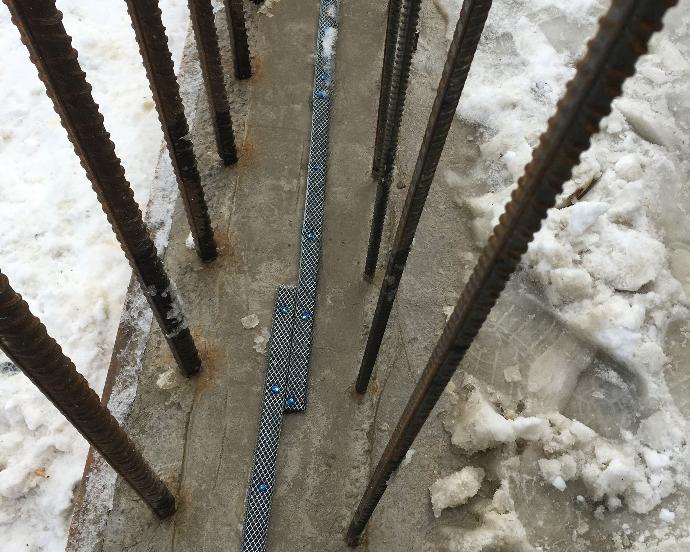
Expandable waterstops have been used as waterproofing materials for decades. Their primary function is to bind water and swell but to shrink when they release water. However, it is essential to remember that concrete works must be done with high quality, even with expanding waterstops.
Expandable waterstops are fixed in construction joints with special glue or profiled metal mesh and screws. The clay-based waterstop can be installed in any weather using a profiled mesh. In addition, the mesh fixes the waterstop more firmly in the right place during casting, in which the poured concrete cannot displace the waterstop. Having seen different ways of fastening the expandable waterstop, we recommend using profiled metal mesh to the fullest extent to ensure the most reliable solution.
Expandable waterstops are ideal for use in construction joints subject to constant moisture or water pressure. A good example is water tanks or other concrete structures in a constantly moist environment. However, their expanding and shrinking nature makes clay tapes not suitable for use in structures that may dry out. This is because the expansion time of the clay-based waterstop is 1-1.5 days, which can temporarily cause water to seep through the construction joints.
Over the years, we have found that the most suitable expanding waterstop for our northern climate is a clay-based expandable waterstop. Whose mechanical fastening with a profiled metal mesh allows it to be installed at any time of the year, regardless of the weather.
Injection hoses
The injection hose is designed for waterproofing the construction joint between the existing and the new construction. The hose can be filled with injection resin approximately 28 days after the concrete is cast. It is essential that the length of the injection hose contour does not exceed 10 meters. For more extended construction joints, the joint must be divided into several contours, less than 10 meters.
For injection, it is essential to bring the start and end ends of the hose out of the structure for easy access. When installing, use only the connecting links and installation net intended for this purpose, and choose either concrete screws or nail dowels for fixing.
When starting the injection, the air in the hose is forced out and replaced by the injection resin. As a result, the holes in the walls of the hose open under the proper pressure, and the resin can fully exit the hose and be evenly distributed in the construction joint.
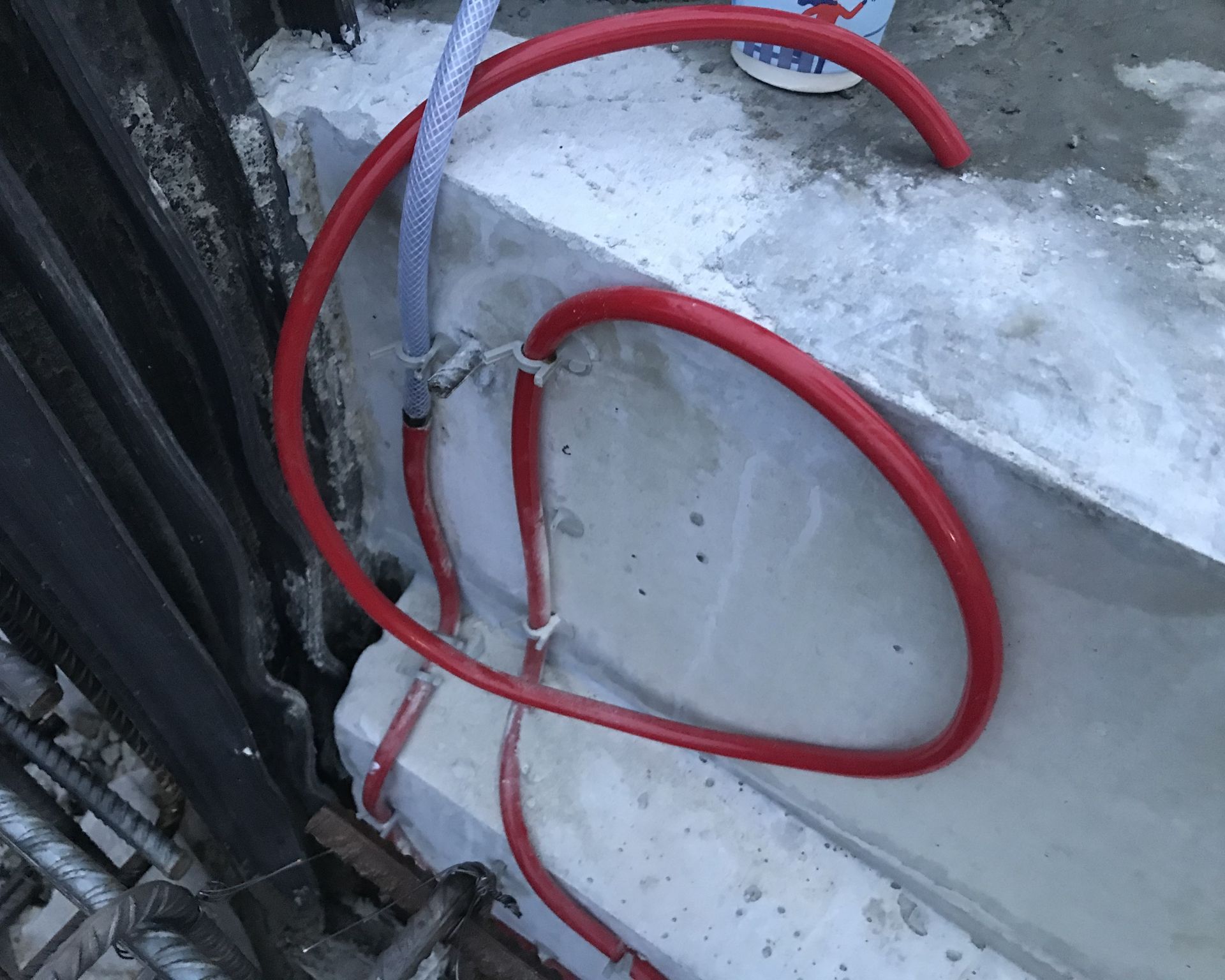
NB!
The picture illustrates an unfinished installation.
An injection hose is also generally used as an additional guarantee waterstop with other construction joint waterproofing solutions, such as construction joint profiles or clay-based expandable waterstop. For example, if the profile or clay-based waterstop has started to let water through, the leak can be closed using injection hoses.
We want to point out that using the injection hose in construction joints as an additional method for waterproofing ensures the most affordable and reliable way to stop leaks.
Summary
There are many ways to waterproof construction joints, all of which work perfectly in their right conditions. Therefore, it is essential to know which materials to use in different constructions and to choose waterproofing materials according to the purpose. This way, it is possible to develop an effective and economically best waterproofing solution.
If you want to know if and how we can make your concrete structures waterproof and speed up the casting process with the “white tank” method, then contact us, and we will review the project together.
